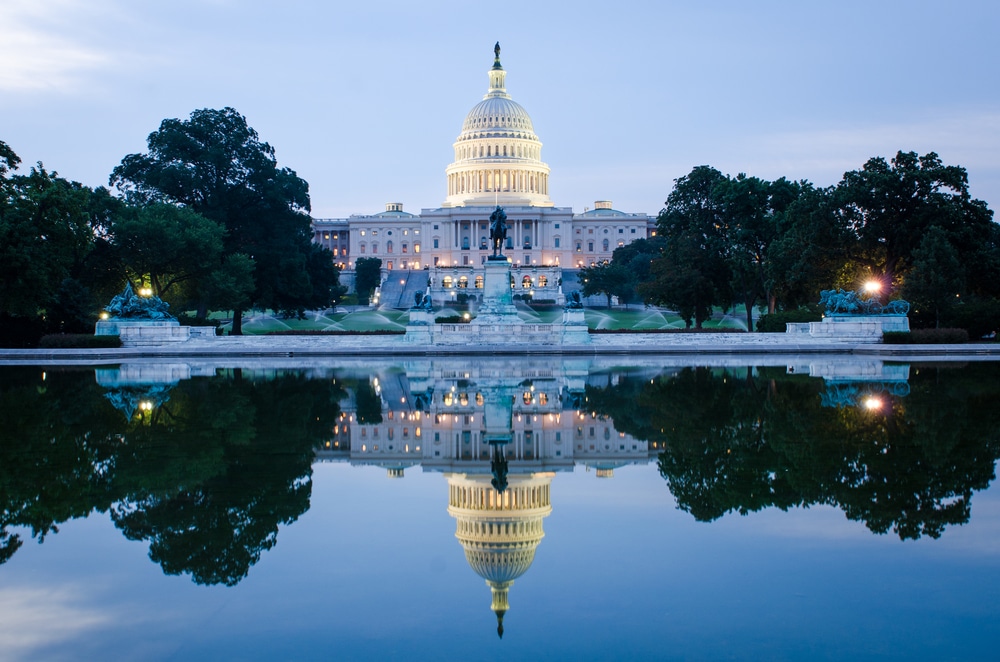
Sandpiper Appoints Hermen Chow to its Financial and Professional Practices in Hong Kong

Sandpiper Appoints Liz Egginton to Lead Technology Practice
24 Hours to Go: What Comes Next for U.S.-China Relations after the Election?
November 2024

This article is part of Sandpiper’s Public Affairs Tracker content series. Our Public Affairs team provides in-depth monitoring and analysis on emerging political and macroeconomic issues, helping companies formulate appropriate strategies for challenging business environments. Click here to explore other recently published articles.
The most unpredictable U.S. presidential race in living memory is finally drawing to a close. As Americans head to the polls in an election that may well come down to the wire, now is our chance to take final stock of what the post-election future may hold for those impacted by China-U.S. relations, including the many businesses for which both markets are essential.
The ideological chasm between Vice President Kamala Harris and former President Donald Trump is vast, and whoever takes office in January, the result will have profound reverberations well beyond America’s borders – especially in the Asia Pacific region.
Yet, in a tumultuous campaign that has spanned some of the thorniest issues in American public discourse – from immigration to abortion – one obvious theme has largely been absent from the conversation: China.
The debate around China had been a major point of contention over the previous two election cycles, but has receded into the background this time around as other domestic and foreign policy concerns have taken centre stage. So, what can we possibly glean about how these two very different candidates would handle the ‘world’s most important relationship’?
A cross-party consensus?
It has almost become a truism to say that a hard line on China is now one of the few areas of bipartisan consensus in an otherwise polarised American political climate. The perception that China’s rise poses a challenge to U.S. power overseas and prosperity at home has become entrenched across the ideological spectrum.
While the Trump administration first catalysed this shift in American thinking, the last few years under President Biden’s team have seen the emergence of a far more comprehensive architecture of restrictive policies, which Chinese officials have openly denounced as ‘containment’. Trump-era tariffs have been extended or enhanced, not rolled back. The pre-Covid ‘trade war’ has since morphed into a large-scale ‘tech war’ under the Biden-Harris administration, with more stringent export controls and broader limitations on investment, especially around infrastructure, computing technology, and the automotive industry.
Meanwhile, China’s leadership seems to have relegated consumption-led growth to the backburner of economic priorities, pivoting instead to ‘new quality productive forces’ and export-led technological dominance – a fact that has done nothing to quell widespread concerns about Chinese overcapacity and unfair subsidies. Both countries’ approaches have only heightened the general sense of unease in the global business community.
Finally, it is worth remembering that while U.S.-China contacts have stabilised somewhat since Biden and Xi met during last year’s APEC summit in California, it was nonetheless during the Biden-Harris administration that the bilateral relationship fell to its lowest point in decades. From Nancy Pelosi’s visit to Taiwan, to the ‘spy balloon’ incident, to the imposition of Section 301 tariffs on a whole range of Chinese industrial exports, ties have been repeatedly frayed.
An uncertain picture
All this is to say that whoever moves into the Oval Office in January will be stepping into a difficult relationship with China – and neither candidate has made clear what the specifics of their China strategy would be. The difficulty of predicting Trump’s agenda is that his foreign policy approach has historically oscillated between personal impulsivity and deference to advisers – likely represented by an eclectic cast of competing personalities. On the other hand, the problem with trying to read Harris is that her campaign platform has been light on foreign policy across the board.
Nevertheless, market-oriented observers can restore a measure of predictability by discerning the candidates’ broad starting points. It is fair to say that U.S. economic growth and prosperity would be among Donald Trump’s main concerns – and his approach to China should predominantly be viewed through this prism. Staying true to the mantra of ‘America First’, China policy under a second Trump administration would likely be transactional, less ideological, and rooted fundamentally in economic and trade competition.
At the same time, Kamala Harris can be expected to continue in the direction of the outgoing Biden administration, competing with China by doubling down on industrial investment at home and committing to a multilateral framework of regional alliances abroad. It is worth drilling down into some of these aspects in more detail to understand the potential implications for businesses.
A tale of two candidates: The continuation of Biden-Harris
If Kamala Harris takes office in January, she would be inheriting the legacy of the outgoing administration, in which she herself has played a central role. In the words of Secretary of State Antony Blinken, the administration’s China strategy can best be summed up in three words: “invest, align, compete”.
So far, ‘investing’ has meant enacting sweeping domestic legislation like the Infrastructure Investment and Jobs Act and Inflation Reduction Act, intended in part to reorient the American economy toward greater international competitiveness. More specific to China, we have seen the introduction of the CHIPS and Science Act, designed to reinvigorate the American hi-tech industry, with the allocation of $52.7 billion to semiconductor research and supply chain reshoring – along with strict provisions against building certain types of facilities in China.
Meanwhile, ‘aligning’ has meant committing to a more assertive foreign policy in the Indo-Pacific, based on cultivating multilateral regional alliances – such as AUKUS and the Quad – while being more forthright on the Taiwan issue, as evidenced most recently by the approval of a $567 million military aid package.
While it is safe to anticipate continuity, as commander-in-chief, Kamala Harris would of course have more autonomy to calibrate China policy in line with her own interests, which – judging by her prior voting record and professional biography – may well include concerns over human rights and international law. As senator, she co-sponsored Hong Kong and Xinjiang-related legislation and repeatedly talked about human rights issues in the context of China during her 2019 campaign. Given that her vice-presidential running mate, Tim Walz, also has a history of campaigning on such issues, it is fair to expect the human rights factor to colour a Harris-Walz strategy on China to some extent.
A tale of two candidates: The Trump card
The conventional view of Donald Trump is that he would have less time for such principled scruples and would instead approach the U.S.-China relationship through the cold, hard lens of realpolitik and strategic advantage – especially with respect to trade and the economy. The anti-globalisation animus that Trump so effectively tapped into in 2016 has not gone away – in fact, his vice-presidential running mate, Senator JD Vance, may well be the most articulate exponent of this sentiment in American politics.
Concerned with the long-term stagnation of America’s traditional industries, Vance has long been an advocate of protectionism and increased state intervention in the economy. The Trump campaign has already pledged to impose 60 per cent tariffs on goods from China and 20 per cent on goods from the rest of the world, prompting widespread concern among many of America’s trading partners. Right now, this may seem like rhetorical posturing, but if effected it would have a profound impact on the U.S. economy, pouring gasoline on the already smouldering inflation rate.
Trump’s would-be advisers could play an outsized and potentially conflicted role in shaping the policy discourse. If Vance were to have a decisive influence over economic policy, he would lend a powerful voice to a whole roster of China hawks from Trump’s first administration, who would likely be returning to high office. Heavyweights like Mike Pompeo, Robert Lighthizer, Robert O’Brien, and Elbridge Colby have long advocated for a more muscular stance on China from a defence and security perspective, along with decoupling in the economic realm. If these figures came to lead the administration’s China strategy again, prospects for improved relations would be poor.
Their priorities, however, would be fundamentally at odds with those of other prominent Trump supporters like Elon Musk, who has enormous interests in China and has expressed a willingness to serve in a new Trump administration. The possibility of an elite tug-of-war in Trump’s inner circle – combined with the former president’s renowned impulsivity – makes his potential China strategy even more difficult to predict.
Reading the tea leaves
Whatever happens, the winner of tomorrow’s election will have to preside over a fragile but crucial relationship in an increasingly unstable world. The fraught history of the last eight years makes it impossible to say definitively which party would be more hawkish on China going forward – or which of the two candidates is best placed to recalibrate the relationship on a more positive footing. Confrontation has become the new orthodoxy – at least on the level of trade and technology – and this trend will inform decision-making in Washington across the aisle.
For global businesses having to navigate through the next chapter of U.S.-China relations, paying attention to geopolitical tectonics will be more important than ever before.




